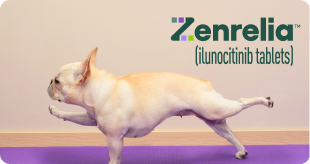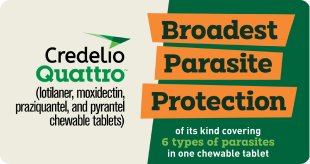When your neighborhood is blanketed in snow, it’s the best time of the year to take your dog for a scenic walk. Though the sidewalks may be scattered with rock salt or bright blue desalting crystals, which can be harmful to pets, that doesn’t have to stop you and your dog from getting out this winter. Here’s what you should know to keep your dog safe around ice melting salt.
Why Is Ice Melting Salt Dangerous For Dogs?
Commercial deicing products are usually made up of a blend of different ingredients that vary between different brands. The good news is, the most popular brands of melting salts commonly used by homeowners and landscapers tends to be free of toxic chemicals so they’re generally safe for the environment, as well as pets.
The most common ingredients used in deicing salts are rock salt (sodium chloride), calcium chloride, magnesium chloride, and potassium chloride. These are all types of salts that are commonly used in food production and can be used to make supplements for people who have low levels of minerals in their blood. In short, they’re nontoxic when consumed in trace amounts.
However, it can still be harmful to paws. When your dog walks over deicing products, the salt can draw the moisture from their paw-pads, leaving their skin dry and cracked and may even bleed. Cracked paw-pads become extremely painful when exposed to salt.
Your dog’s natural response to the pain and irritation on their paw-pads is to lick the affected skin. As they lick their paws, they can consume small amounts of deicing salts. If your dog consumes enough excess minerals, they may be at risk for salt poisoning. Mild salt poisoning can cause dehydration, vomiting, and diarrhea. In large amounts, consuming too much salt can cause cell damage, seizures, kidney failure, and death. Fortunately, it’s unlikely for dogs to consume high amounts of deicing salts by licking their paws.
Protect Your Dog’s Paws By Preparing For Walks
You can purchase dog booties to protect all four of your dog’s paws. They come in many styles, with velcro straps, elastic, and even suspenders to keep them from falling off. Most dogs get used to them quickly. Just make sure you put them on immediately before taking your dog outside. That way, your dog will be preoccupied by the scents and sights of the outdoors, which will help distract them from the strange feeling of wearing boots.
Paw balm is a good alternative to dog booties. Paw Rescue contains a combination of organic oils and waxes that form a barrier between your dog’s paw pads and deicing salts. Simply apply it immediately before the walk and your pup’s paws are protected.
It’s best to avoid walking over visible deicing salt whenever you can. Your dog’s paws have a high concentration of blood vessels to keep them from freezing, so it’s generally safe for them to walk on fresh, clean snow on short walks.
After Walk Paw Care
When you come inside for a walk, clean your dog’s paws to remove any ice balls, moisture, and salt residue. You can use rags, warm water, and dog shampoo to wash your dog’s paws. We love Pawz Daily Paw Wipes because they contain aloe vera to moisturize dry paws in the winter.
Then, you can apply another layer of paw balm to help lock in moisture. The dry winter air, too, can lead to painful, cracked paw pads. Supplementing your dog’s diet with an omega-3 fatty acid supplement can help keep their skin healthy.










































